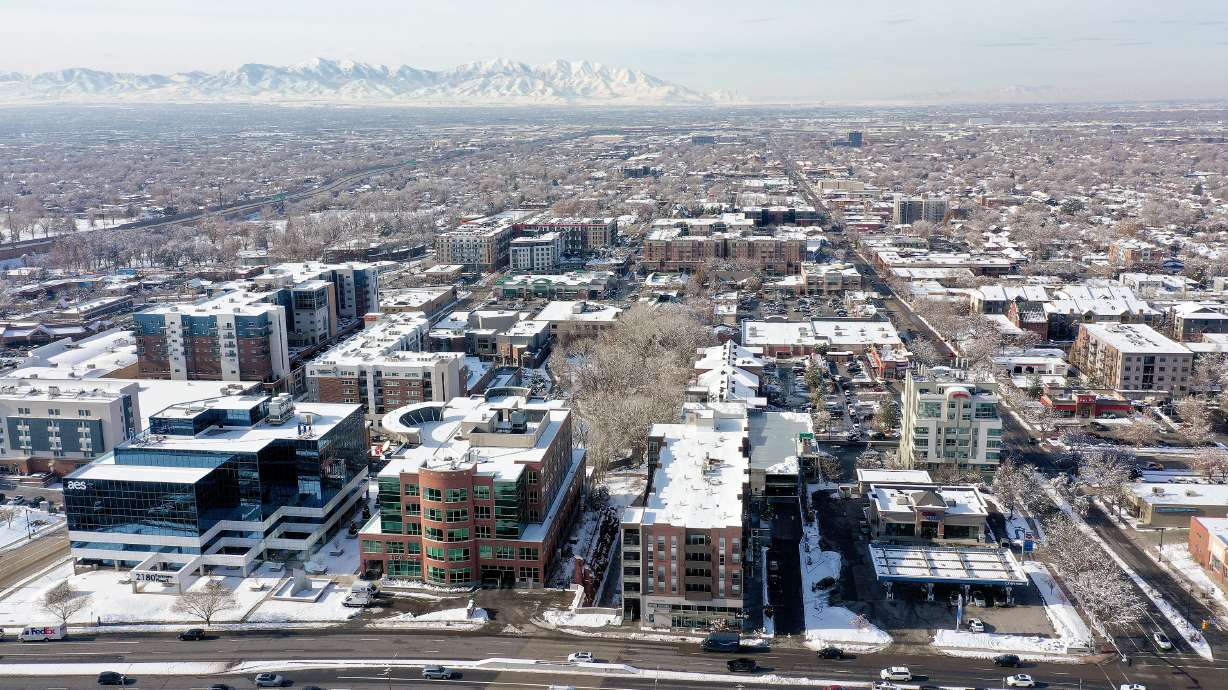Estimated read time: 4-5 minutes
This archived news story is available only for your personal, non-commercial use. Information in the story may be outdated or superseded by additional information. Reading or replaying the story in its archived form does not constitute a republication of the story.
SALT LAKE CITY — Utah was the fastest-growing state between the 2010 and 2020 censuses and its urban core was a major driving force behind that, even though the percentage of Utahns living in urban areas technically shrank over the past decade, according to a new report.
The Census Bureau last week released data tied to urban and rural trends from the 2020 census, which found that Utah's urban population grew by 17%, much higher than the national rate of 6.4%. In addition, about 88% of all of Utah's housing units in Utah are also found within urban areas.
The data essentially confirms trends that Utah experts have pointed out for some time — that Utah's most populated areas are a magnet for the state's growth.
That has been the case since the 2020 census as well, as well. Last month, the University of Utah Kem C. Gardner Policy Institute released a report that estimated that Utah's six most-populated counties accounted for about 80% of the new population growth between 2021 and 2022.
Mallory Bateman, the director of demographic research at the Gardner Policy Institute, explained that work and educational opportunities are found in populated areas, so that tends to generate more growth toward the regions where people are already located. While Utah's rate is higher than the national average, that's not necessarily unique to the Beehive State.
"(The report) shows that continued kind of population in the urban areas, and I think that's something we're seeing throughout the U.S.," she told KSL.com on Wednesday. "That continued concentration of population in urban areas is what we thought was going to keep happening, and we're seeing (it) in the data."
The report also finds that 90% of Utah's population falls within urban areas, despite urban areas accounting for only 1% of the state's land use. The percentage is actually down slightly from 91% in 2010.
However, that's because the Census Bureau tweaked its definition of an urban area for the 2020 census. An urban area is now classified as a population of at least 5,000 people or 2,000 housing units instead of a minimum of 2,500 people, as was the case for decades leading up to the change. The new definition resulted in Utah dropping from 36 to 24 urban areas over the past decade.

The change, Bateman explained, helps better define smaller communities that were once viewed as urban but aren't really population centers. Per the Census Bureau, the change affects "program eligibility and funding formulas" related to urban and rural funds. So if the federal government provides funds to rural communities, a community with 3,000 people could now be eligible for those funds which wasn't the case before.
"The whole thing about urban and rural is all about money," Mary Craigle, bureau chief for Montana's Research and Information Services, told the Associated Press last week. "Places that qualify as urban are eligible for transportation dollars that rural areas aren't, and then rural areas are eligible for dollars that urban areas are not."
Bateman said that the bureau hasn't released the boundaries for all of the newly classified urban areas, so it's difficult to know certain trends within the urban areas — though there are some clues to what some of the boundaries are in the data. For instance, Salt Lake City's 1.17 million population indicates that the bureau views nearly all of Salt Lake County as being within the Salt Lake City urban area.
Overall, 80% of Americans live within urban areas under the new definition. California (94.2%) nudged out Nevada (94.1%) for the most urban-center population in the country, while Vermont (64.9%) has the highest rural percentage. The New York-Jersey City-Newark urban area between New York and New Jersey (19.4 million) remains the largest urban area in the U.S.
The report was released a week after the agency published its 2022 population estimates, which showed an "early indication" of post-COVID-19 trends. One of the leading theories after the COVID-19 pandemic began is that Americans may move out of high-density urban cores.
But Bateman says it's still way too early to know what types of population trends will have emerged from the pandemic for quite some time, including whether Americans will opt for lesser populated areas amid the rise of remote work options — even if she's aware of some anecdotal evidence already. Those trends, she adds, could even end up being people moving from large metropolitan areas to smaller urban areas.
"I think it's something we're watching," she said, noting that every state has eased restrictions at different paces which may impact the estimates since the 2020 census. "To get more of that broader perspective, I think it's going to be at least a couple of years if not getting the whole decade (to determine new trends). ... I think this is one that is going to take time to observe and kind of get an understanding of all the impacts have played out."










